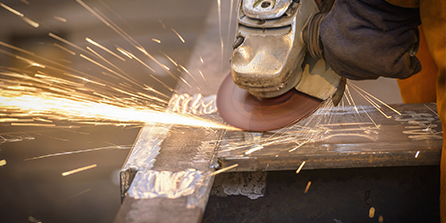The Essential Guide to Cutting Aluminum Profiles with the Right Discs
Aluminum has become one of the most popular materials in various industries, including construction, automotive, and aerospace, thanks to its lightweight and durable properties. However, processing aluminum profiles can be challenging, especially when it comes to cutting them accurately and efficiently. The choice of cutting disc plays a crucial role in achieving the best results. This article provides an overview of the essential aspects of selecting and using the correct disc for cutting aluminum profiles.
Understanding Aluminum Profiles
Aluminum profiles come in various shapes and sizes, including bars, tubes, and angles. They are often used to create frameworks, supports, and structural components in a wide range of applications. The softness of aluminum compared to other metals makes it easier to cut, but it can also pose some challenges, such as burr formation and material distortion during the cutting process.
Importance of Selecting the Right Cutting Disc
The cutting disc is a pivotal tool in the machining process. Using the wrong disc can lead to poor cutting performance, increased wear on the tool, and substandard finish quality. When selecting a cutting disc for aluminum profiles, several factors come into play
1. Material Composition Discs specifically designed for cutting aluminum are typically made from aluminum oxide or other materials that can withstand the properties of aluminum. These materials help manage heat generation and reduce the risk of melting the aluminum during cutting.
2. Disc Thickness Thinner discs reduce the amount of material being removed, resulting in cleaner cuts and minimal heat build-up. However, they may be less durable, so finding a balance between thickness and durability is essential based on the specific cutting application.
3. Grain Size and Type Discs with a finer grain size provide a smoother finish and are often preferred for intricate cuts, while coarser grains are more effective for rapid material removal.
4. RPM Rating The revolutions per minute (RPM) rating of the cutting disc should match the capabilities of the cutting tool being used. Operating outside the recommended RPM can lead to disc failure and safety hazards.
disco para cortar perfiles de aluminio

Tips for Cutting Aluminum Profiles
To ensure optimal results when cutting aluminum profiles with a cutting disc, consider the following tips
1. Use Appropriate Speed Maintain the right cutting speed, which typically falls within the manufacturer’s recommended range. Too fast a speed can cause overheating and increase the chances of melting the aluminum.
2. Cooling and Lubrication Applying a cutting lubricant can help reduce heat and friction, ensuring a smoother cut. Additionally, consider using water to cool the disc and the material being cut.
3. Secure the Workpiece Ensure the aluminum profiles are securely clamped during cutting to prevent movement, which can lead to inaccurate cuts and increased risk of accidents.
4. Regularly Inspect Tools Check the cutting discs for wear and tear regularly. Using a worn disc can undermine the quality of the cut and pose safety risks.
5. Safety First Always wear appropriate personal protective equipment (PPE) such as gloves, goggles, and ear protection while cutting aluminum. This ensures personal safety amid flying debris and noise.
Conclusion
Cutting aluminum profiles can be straightforward when the right tools and techniques are employed. Selecting an appropriate cutting disc is vital to ensure efficiency, accuracy, and safety in the cutting process. By understanding the characteristics of aluminum and utilizing suitable discs, industries can achieve high-quality cuts, ultimately contributing to the success of their projects. Whether you are working in manufacturing, construction, or a DIY project, investing in the right cutting tools will pay off in the quality of your workmanship and the longevity of your tools.
Post time:Oct - 07 - 2024

















